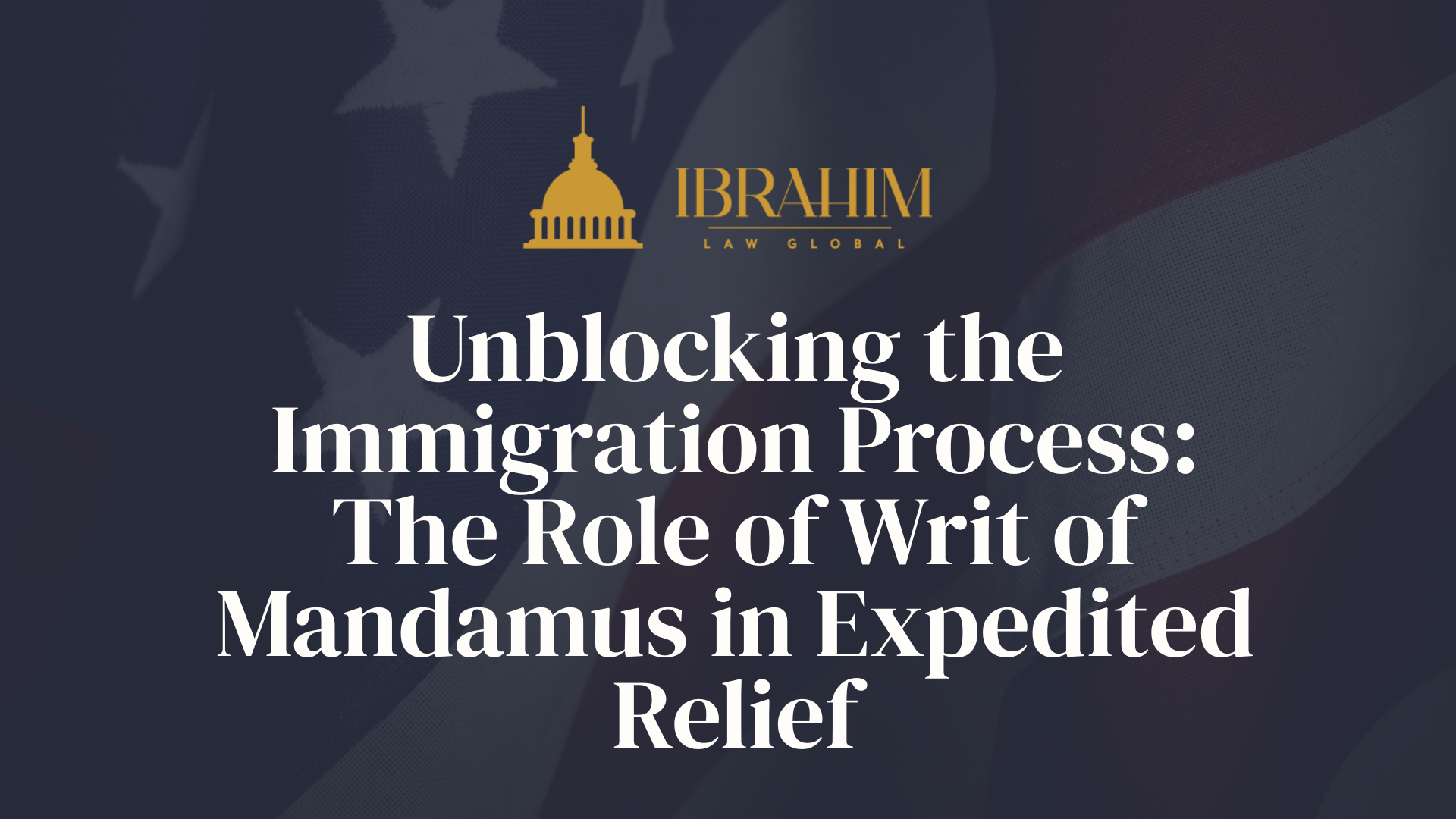The immigration process in the United States can be complex and time-consuming. Many individuals wait months or even years for a visa or green card, facing prolonged delays without clear communication from U.S. Citizenship and Immigration Services (USCIS). If your immigration petition is stuck in an unreasonable delay, you may have legal options to push the process forward.
One potential solution is filing a writ of mandamus—a legal action compelling the government to act. At Ibrahim Law Global, we understand how frustrating immigration delays can be. Our experienced immigration attorneys in Illinois can help assess your situation and determine whether a writ of mandamus is the right step for you.
Delays in the Immigration Process
The immigration process is prone to delay. Many of the petitions that people file can take months just to go through the initial review process. From there, the process can be extremely delayed, which causes quite a bit of frustration. In many cases, an immigrant may not be given a clear reason for why their case is delayed.
When a delay in the processing of an immigration petition is extreme, the petitioner may try to speed up the process with a writ of mandamus. Sometimes, this is the only possible legal option. A knowledgeable immigration attorney will help determine your best course of action.
What is a Writ of Mandamus?
A writ of mandamus is a lawsuit filed in federal court requesting a judge to order a government agency to fulfill its legal duty. It is a process used for various types of cases, including some immigration cases. A writ of mandamus is basically a civil lawsuit against the government. It is made on claims that the government must act in accordance with its legal duty. In an immigration case, it is a request to force the U.S. Citizenship and Immigration Services (USCIS) to handle your petition in an expeditious manner.
Filing a writ of mandamus is a strategic move that requires legal assistance. Ibrahim Law Global can help you navigate this process and build a strong case for expedited relief.
How Does a Writ of Mandamus Work?
Under the Administrative Procedure Act (APA), federal agencies must process immigration applications within a reasonable timeframe. If USCIS fails to act, applicants may file a mandamus lawsuit in federal court. The process typically involves:
- Assessing Eligibility – Your attorney will determine if your case meets the criteria for an unreasonable delay.
- Filing the Lawsuit – The complaint is submitted in federal court against USCIS.
- Government Response – USCIS has a limited time to reply, often within 60 days.
- Court Review – A judge will evaluate the case and decide whether to order USCIS to act.
While USCIS is required to address your case after a writ of mandamus is granted, this does not mean your petition will be approved—it only ensures a decision is made. A skilled immigration attorney will assist you through the process of filing a civil case in federal court.
Benefits of a Writ of Mandamus
The USCIS processes thousands of immigration cases a year. With so many petitions, it is no wonder that the processing time can be lengthy. Many of these matters take longer to handle than we hope. However, when compelled by a writ of mandamus, the USCIS must provide expedited relief. Therefore, it will essentially require your immigration matter to be handled as soon as possible.
A writ of mandamus may be particularly useful in family-based immigration petitions, employment petitions, adjustment of status, naturalization, and green card matters. Typically, the USCIS will have 60 days to respond to a writ of mandamus.
When Can I File a Writ of Mandamus?
A person may file a writ of mandamus only when a legal process is taking an unreasonable length of time to resolve. The request must be made only after a particular immigration matter is stalled or is not handled quickly enough. It is also necessary not to wait too long to file a writ of mandamus. An unreasonable length of time can be subjective, so you will need to have details of the date of submission and any communication you had with the USCIS.
With help from your immigration attorney, you can determine whether you may benefit from filing a writ of mandamus. Some of the situations that may warrant a filing include:
- You submitted a petition for a green card, but have not had a response for an extended period of time.
- You cannot get an update on the status of your USCIS petition.
- You have a pending application for a lengthy period of time.
- You received approval on your application, but nothing further has happened.
- Your application was denied, but you cannot get an explanation as to why.
The length of time it normally takes the USCIS to process a petition depends on a variety of factors, including the type of visa request. It is best to check with your attorney to find out the typical processing time for your specific type of application.
How to File a Writ of Mandamus
Filing a writ of mandamus is a complex legal process that requires strong supporting evidence. The lawsuit should include:
- A clear timeline of your application and delays
- Documentation of all USCIS correspondence
- Justification for why the delay is unreasonable
A mandamus lawsuit can take several months, depending on court schedules and government responses. Working with an experienced immigration attorney ensures your case is filed correctly and efficiently.
Contact Ibrahim Law Global Today
The immigration process can be lengthy. A writ of mandamus is a way you may be able to ensure that your case is not stalled in the system. If you feel that your case is taking an unreasonable length of time, it may be necessary to file a writ of mandamus. Talk to our legal team to learn how we can assist you with your immigration matter. Call us today at (708) 584- 3043 to request a consultation.






